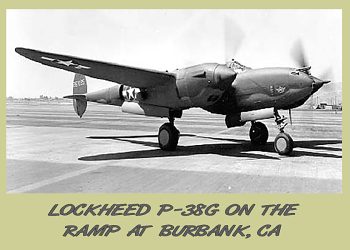Lockheed P-38G (42-12937)
During the early 1940s, the Lockheed P-38 Lightning suffered from compressibility tuck during dives. The phenomenon caused the aircraft to flip inverted as the center of lift moved back under the effects of compressibility shock waves. To counteract this, Lockheed engineers designed a dive flap to be added to production aircraft in late 1943. The prototype system was installed for testing on a P-38G-10-LO, Air Corps serial no. 42-12937. The aircraft was flown from Burbank, California by Lockheed test pilots Tony LeVier, Stan Beltz, Herman Salmon, and Milo Burcham. LeVier conducted tests from various altitudes, up to 35,000 feet, always deploying the dive flap before accelerating to critical speed. Recorded data from LeVier's final test showed a maximum airspeed of Mach 0.72, and a 7.5g load on the airframe during pullout.

© Copyright 2004-, The X-Hunters. All rights reserved. Copyright Policy Privacy Policy Page last modified 05/01/2023



